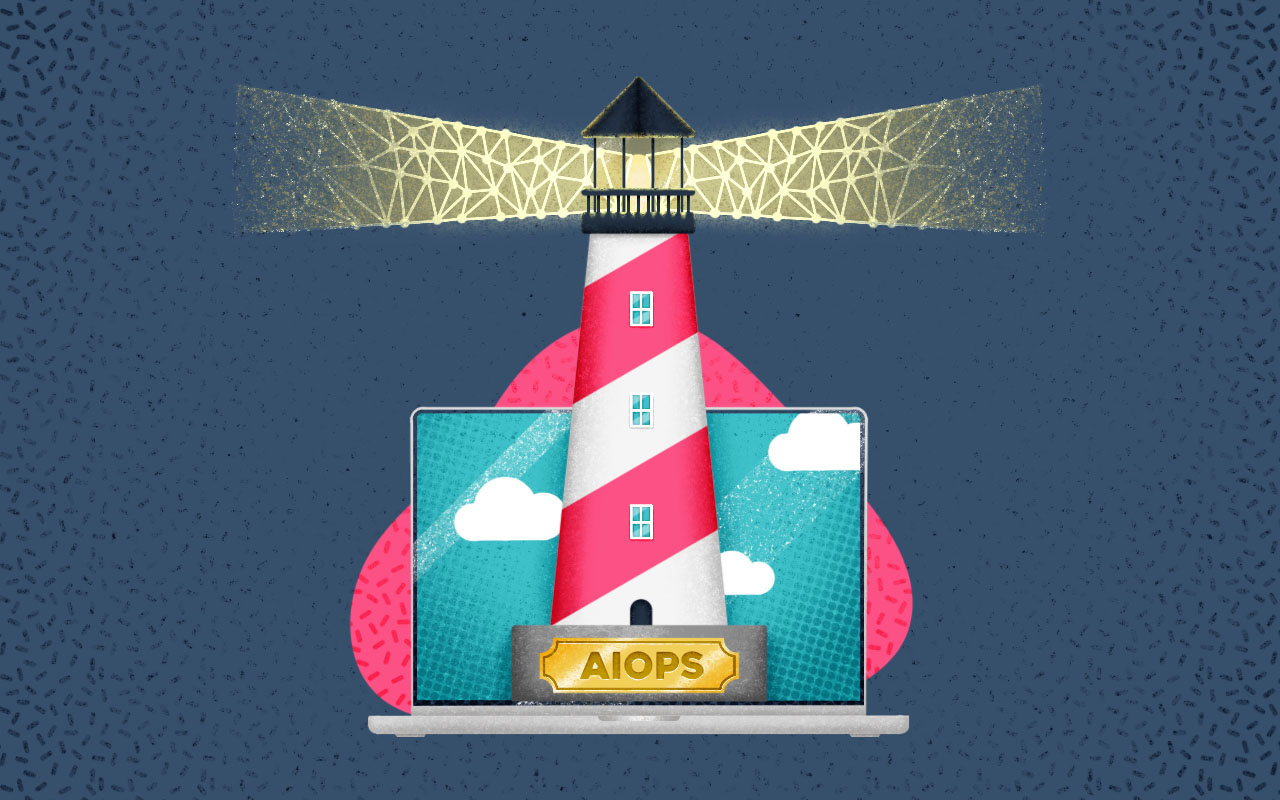Traditional methods of managing IT infrastructures are no longer sufficient to keep pace with the complexities and demands of modern digital environments. New processes and procedures need to be assembled to supply companies with the resources they need on both the front and back end to support. This is exactly why companies need to harness the power of Artificial Intelligence (AI) and Machine Learning (ML).
This blog will cover AIOps—its definition, key components, benefits, challenges, and future prospects. But first, before exploring AIOps and its intricacies, you need to know the background of AIOps — IT Operations.
What is IT Operations?
IT Operations (ITOps) is the process of managing, implementing, and supporting the IT services needed by a business to support its IT infrastructure for all users. It encompasses everything from implementing new technologies (e.g., cloud computing) and monitoring internet connectivity of the software, to running data backups and addressing the root cause of IT-related problems. The goal of ITOps is to ensure that all IT systems within the business are running in a way that allows the business to run smoothly and grow (i.e., there are no roadblocks related to IT) and keeps systems secure and compliant.
Why does this matter?
“It is simply impossible for humans to make sense of thousands of events per second being generated by their IT systems.” (“Market Guide for AIOps Platforms” Gartner, 2022)
When things stop working or security breaches happen, and it’s difficult or even impossible to get work done, something needs to be fixed — and fast. Downtime adds up quickly for the end user and your company’s bank account. Downtime is expensive. To mitigate and, ideally, to avoid downtime, firm ITOps processes and solutions need to be in place. Adding AI into the mix increases the accuracy and speed of the solutions, making it an advantageous pursuit.
IT Ops is for keeping things running and getting them back up when they go down—these are not easy tasks. It’s undeniable that IT environments today are very complex. AIOps reduces downtime and speeds up resolution by aiding humans to keep better visibility on the environment — to a degree that is greater than what can be done without digital and automated help.
What is AIOps?
AIOps (originally coined by the research firm, Gartner in 2016) is short for Artificial Intelligence for IT Operations — also known as Algorithmic IT Operations. It’s a methodology that combines AI and Machine Learning techniques with big data analytics to enhance and automate various aspects of IT operations (read: it streamlines processes). AIOps leverages advanced algorithms to analyze large volumes of data generated by IT systems and infrastructure components in real-time to provide actionable insights, predictive analytics, and automated remediation capabilities to optimize IT performance, thus improving reliability and time to resolution.
2 AI Ops Use Cases
- Using AIOps as a monitoring tool, you can determine which resources are supported by which applications and how they all connect.
- By analyzing log data and network traffic in real time, AIOps can respond quickly to cyber incidents and reduce the chance of threats and intrusions.
5 Key Components of AIOps:
AIOps connects the multi-modal and diverse IT landscape by taking siloed teams, software applications, and hardware within an organization and bringing them together in one IT environment with one common, shared space for application performance and processes. It then uses this data to detect and act on issues quickly – either speeding up resolution or avoiding negative impacts entirely. Below are the biggest components of AIOps and how each of them affects the IT environment.
- Data Ingestion — AIOps offerings collect data from many sources across a company’s IT ecosystem (e.g., logs, metrics, and traces) via agents, APIs, and other integrations. Examples of data included in AIOps: Historical performance and event data, infrastructure data, application demand data, and packet data.
- Data Processing — After the data is collected, it’s processed and normalized to ensure consistency and relevance. Using advanced analytics techniques, like anomaly detection, pattern recognition, and correlation, meaningful insights and trends can be identified and reported. In other words: it’s looking for what’s useful and what’s not.
- Machine Learning Models — Machine learning models are used to analyze historical data, learn patterns of normal behavior, and predict potential issues or anomalies before they escalate (e.g., when a server outage is going to occur). As more time goes by the accuracy and effectiveness of the models only continues to adapt and improve.
- Root Cause Analysis — AIOps streamlines the IT-related troubleshooting process by finding the root causes of incidents and performance issues—helping IT teams pinpoint the underlying factors contributing to problems. This enables faster time-to-resolution metrics and minimizes downtime.
- Automation and Orchestration — AIOps automates routine tasks (e.g., support desk chat questions) and workflows, thus reducing manual labor involved—accelerating task response times.
4 Benefits of AIOps
The long-term goal of AIOps is to achieve autonomous IT operations. One where AI-driven systems can self-monitor, self-heal, and self-optimize without human intervention—freeing up humans to focus on other priorities and more creative tasks. But even before we get there, it helps make sense of a complex environment to empower IT to act quickly. Here are some additional benefits of AIOps in businesses:
- Enhanced Visibility: Comprehensive visibility into the entire IT infrastructure that enables IT teams to manage complex environments more effectively.
- Proactive Problem Resolution: Organizations can identify and address potential issues before they impact business operations – minimizing server downtime and service disruptions.
- Improved Efficiency: With automation, IT teams can focus on strategic initiatives and higher-level tasks, rather than repetitive maintenance activities.
- Scalability: AIOps accommodates growing volumes of data and infrastructure complexity to help organizations maintain operational excellence, even in dynamic, constantly changing environments.
4 Challenges and Considerations for AIOps
No new technology adoption comes without its challenges. Here are some of the key considerations for AIOps:
- Data Quality and Integration – AIOps relies on high-quality data from a diverse range of sources. It can be challenging to integrate related IT solutions to make sure they can communicate – ensuring data accuracy, consistency, and compatibility. It’s important to understand how AIOps offerings are integrated with your ITSM solution, and to conduct a pilot or trial before purchasing.
- Skill Gap – Working with AIOps requires specialized skills in data science, machine learning, and AI technologies. To help employees understand and fully leverage this technology, your organization may need to invest in training or hire talent with the necessary expertise. When considering AIOps offerings, check with the provider what level of admin support is expected.
- Change Management – As with any change, AIOps may require cultural and organizational changes. How are you going to implement them within your organization? What are your typical processes for instating new technology?
- Security and Privacy – As AIOps involves processing and analyzing sensitive data from across the IT environment. To keep this data secure as it travels through the IT infrastructure, organizations must implement robust security measures and compliance frameworks to protect against any potential threats and vulnerabilities.
3 Trends Shaping AIOps
AIOps will continue to grow as more digital transformation initiatives land in the hands of IT operations teams.
“There is no future of IT operations that does not include AIOps.” (“Market Guide for AIOps Platforms” Gartner, 2022)
Here are the biggest trends these initiatives will include or the industry may see:
- Hybrid and Multi-Cloud Environments: AIOps will play a crucial role in providing visibility, control, and optimization across distributed IT infrastructures as more IT environments are hybrid and remote.
- Edge Computing: AIOps will extend its capabilities to monitor and manage edge devices and infrastructure, to ensure reliability and performance at the network edge.
- Autonomous Operations: Full autonomy of AI systems to monitor and optimize IT operations is still a long way off, but the incremental advancements in AI and ML technologies will bring organizations closer to this goal.
By harnessing the power of AI and machine learning, organizations can access insights, automate routine tasks, and proactively address issues to enhance their efficiency, reliability, and agility. These advantages and benefits will pave the way for autonomous IT operations and digital excellence—vital for any business looking to thrive in the coming decades.
A guide to AI in ITSM
Discover how to integrate artificial intelligence into your ITSM, redesign your processes, and take your company’s efficiency to the next level.


